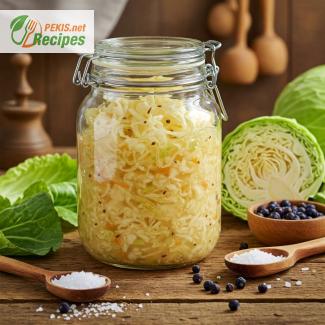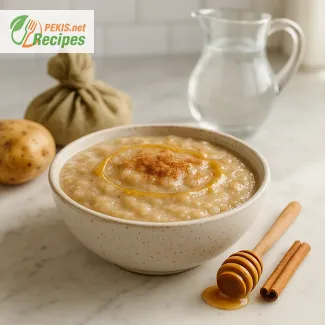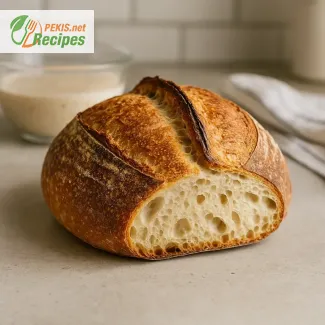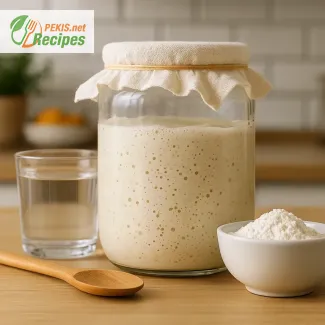
Discover the Timeless Taste of Authentic Sauerkraut
A tangy, crunchy, and deeply nourishing tradition made at home
Few culinary traditions are as deeply rooted in history and health as homemade sauerkraut. This simple yet transformative food has stood the test of time, cherished in kitchens around the world for its unique combination of flavor, texture, and natural benefits. Whether served as a zesty side dish, a refreshing topping, or a key ingredient in hearty meals, traditional fermented cabbage delivers a burst of umami, a delicate sour tang, and an irresistible crunch that elevates any plate.
Crafting your own sauerkraut at home is not only incredibly satisfying but also surprisingly easy. With just two ingredients—fresh cabbage and salt—you can unlock a world of flavor that's been perfected by generations. Unlike store-bought versions, which often contain preservatives or vinegar, homemade sauerkraut is naturally fermented over time, developing complex notes and live cultures that contribute to a wholesome gut-friendly profile. It’s slow food in the truest sense, rewarding patience with depth, aroma, and character.
What makes this fermented delicacy so appealing is not just its taste, but the experience of making it. Watching the transformation of simple shredded cabbage into a golden, fizzy ferment is an almost magical process—rooted in science, nature, and human tradition. The result is more than just food; it’s a celebration of seasonality, self-sufficiency, and the wisdom of ancestral methods.
Why homemade sauerkraut is worth your time
Fermentation has made a resounding comeback in modern kitchens, and sauerkraut is at the center of this revival. Loved by chefs and home cooks alike, it’s praised for its versatility and healthful properties. From adding zing to sandwiches and burgers to pairing perfectly with grilled sausages, roasted meats, or veggie bowls, sauerkraut seamlessly bridges rustic charm and contemporary dining.
Making it yourself allows for complete control over taste and texture—whether you prefer it more sour, mildly tangy, finely shredded, or thickly cut. With a bit of experimentation, you can customize it to suit your palate or even explore exciting add-ins like caraway seeds, juniper berries, garlic, or apple slices for a unique twist.
In addition, homemade sauerkraut keeps exceptionally well. Stored properly, it can last for months in the refrigerator, becoming more complex in flavor as it matures. Its shelf life and low-maintenance fermentation process make it an ideal choice for beginners and seasoned fermenters alike.
The cultural heritage behind fermented cabbage
While many associate sauerkraut with German cuisine, its history spans continents—from Eastern European pickling traditions to Korean kimchi and beyond. The technique of fermenting cabbage can be traced back thousands of years and was valued not only for preservation but also for its role in supporting health through cold seasons.
In central and northern Europe, sauerkraut became a staple in winter diets, offering essential nutrients when fresh produce was scarce. Its practicality made it a household standard, while its complex flavor ensured it remained a culinary favorite. Today, we rediscover it with a new appreciation for its simplicity and benefits.
A sensory delight worth savoring
The moment you lift the lid on a finished batch of sauerkraut, you're greeted with the unmistakable scent of natural fermentation—earthy, sharp, and invigorating. Its texture is delightfully crisp, offering a satisfying bite that adds dimension to every dish. And the taste? Vibrantly sour with subtle sweetness and depth that only time can create.
Whether enjoyed cold, warmed up, or even lightly sautéed, sauerkraut adapts effortlessly to your culinary creations. Use it as a probiotic-rich side for meats, a flavorful topping for grain bowls, or even an unexpected ingredient in savory pies and breads.
Elevate your everyday meals
Bringing this centuries-old recipe into your kitchen is more than a cooking project—it's a commitment to slow, mindful food. It’s about finding joy in simplicity and reconnecting with traditions that nourish both body and soul.
With this easy homemade sauerkraut recipe, you’re not just preparing a condiment—you’re crafting an ingredient with personality, presence, and purpose. Ready to get started? Your first jar of sauerkraut is just a cabbage and a pinch of salt away.
Želiš nadaljevati s sestavinami in receptom? Lahko pripravim tudi prevode in različice za druge jezike.
- Prepare the cabbage: Remove the outer leaves of the cabbage and set aside a couple of clean, intact leaves for later. Cut the cabbage into quarters, remove the core, and finely shred using a sharp knife or mandoline.
- Salt the cabbage: Place the shredded cabbage into a large mixing bowl. Sprinkle the sea salt evenly over the cabbage. Massage the salt into the cabbage firmly with clean hands for about 10–15 minutes, until it begins to release liquid (brine) and softens noticeably.
- Add spices (optional): If using caraway seeds or juniper berries, add them now and mix gently into the cabbage.
- Pack the cabbage into a jar: Transfer the salted cabbage and its brine into a clean glass jar or ceramic crock. Press it down firmly using a wooden tamper or your fist so the brine rises to cover the cabbage completely.
- Add reserved leaves: Place one or two of the reserved outer leaves on top to help keep the shredded cabbage submerged.
- Weigh it down: Use a fermentation weight or a small sterilized glass filled with water to hold the cabbage below the brine.
- Cover and ferment: Cover the jar with a cloth or lid that allows airflow (such as a fermentation lid or loosely placed cap). Store at room temperature (18–22°C / 64–72°F), out of direct sunlight.
- Monitor and wait: Ferment for at least 3–5 days. Check daily to ensure the cabbage stays submerged. Taste it after 3 days and continue fermenting until the desired sourness is achieved (can go up to 2 weeks).
- Refrigerate and enjoy: Once fermented to taste, remove the weight, seal the jar with a tight lid, and transfer to the fridge. The sauerkraut will continue to ferment slowly and develop flavor over time.
Creative Ways to Enhance Your Sauerkraut Recipe at Home
Smart ingredient tweaks and techniques to elevate your homemade fermented cabbage
Crafting homemade sauerkraut is a rewarding process rooted in tradition, but even the most time-honored recipes can benefit from small, thoughtful upgrades. While the basic preparation of fermented cabbage with salt produces a delicious and probiotic-rich dish, there are many opportunities to enhance its flavor, texture, nutritional profile, and even appearance—without compromising authenticity.
Understanding the role each ingredient plays in fermentation helps you tailor your sauerkraut to suit your preferences or nutritional needs. Let’s explore how to make subtle yet impactful improvements to the classic method while avoiding common pitfalls.
Flavor-boosting ingredients that respect tradition
Adding complementary ingredients to your sauerkraut doesn’t mean altering its identity. It means expanding its depth and creating nuanced layers of taste that make your version truly unique.
Caraway seeds and beyond
While caraway seeds are a popular addition in many traditional European sauerkraut recipes, introducing other aromatic seeds such as fennel, coriander, or mustard seeds can bring a new flavor dimension. Each of these spices introduces earthy, slightly sweet, or peppery undertones, giving your sauerkraut a signature profile.
Garlic and ginger
Adding thin slices of garlic during fermentation introduces a pungent richness and slight heat that balances the cabbage’s sourness. For a bolder variation, fresh ginger lends a zesty warmth, especially when paired with Asian-inspired meals or winter dishes. These additions also boost the antimicrobial and anti-inflammatory properties of your sauerkraut.
Vegetables for variety
Incorporating shredded carrots, beets, or daikon radish into your cabbage mixture not only adds visual appeal but also enhances the nutritional content and texture. For instance, carrots bring a subtle sweetness and vibrant color, while beets deepen the earthiness and add striking reddish hues. These root vegetables ferment well alongside cabbage and develop delightful complexity over time.
Why homemade is better than store-bought
There’s no denying the convenience of supermarket sauerkraut, but homemade sauerkraut offers unmatched quality. Most commercial brands are pasteurized, which eliminates the beneficial live cultures that form during fermentation. By making your own, you preserve these valuable probiotics that support gut health.
You also gain full control over:
- Sodium levels, allowing for a lower-salt version if needed.
- Texture, based on how finely you shred the cabbage and how long you ferment it.
- Freshness, as your sauerkraut will not contain preservatives or additives.
- Flavor balance, which can be adjusted with added aromatics or fermented for longer to achieve a tangier taste.
In short, the homemade version is not just tastier and more customizable, but also healthier and more sustainable.
Mistakes to avoid during fermentation
Even the simplest recipes have room for error. Here are common mistakes to steer clear of when making sauerkraut:
Not massaging the cabbage long enough
The brine is essential for anaerobic fermentation, and it's produced by thoroughly massaging salt into the cabbage. Rushing this step can leave you with dry cabbage that ferments unevenly or spoils.
Using iodized salt
Table salt that contains iodine can inhibit fermentation. Always use non-iodized sea salt or pickling salt to ensure active microbial growth.
Exposing to too much air
Sauerkraut must stay fully submerged in brine to ferment properly. Any exposed cabbage can mold. Use weights or fermentation stones and check regularly to keep it submerged.
Overfilling the jar
As the cabbage ferments, it releases gas and expands. Overfilling leaves no room for gas buildup, which can lead to overflow or pressure buildup. Leave at least 2–3 cm (about 1 inch) of headspace.
Fermenting at the wrong temperature
Ideal fermentation temperature is between 18–22°C (64–72°F). Too cold, and the process slows; too warm, and it can encourage unwanted bacteria or an overly sour flavor.
Healthier alternatives and variations
If you’re looking to make your sauerkraut even more nourishing or to suit specific dietary needs, try these adjustments:
Low-sodium sauerkraut
Use half the recommended salt amount (around 15 g per 1.5 kg cabbage) and ferment for a slightly shorter time. To boost flavor, add garlic, dill, or cumin as natural flavor enhancers.
Red cabbage instead of green
Using red cabbage offers a stronger texture and a slightly sweeter taste. It’s also rich in anthocyanins, powerful antioxidants that add a vibrant purple hue and provide anti-inflammatory benefits.
Spicy variation
Add chili flakes or fresh chili slices to give your sauerkraut a kick. This is especially delicious in tacos, grain bowls, or alongside roasted meats.
Cabbage combinations and creative ideas
To explore more gourmet variations of your sauerkraut:
- Add green apple slices for a subtle fruitiness.
- Ferment with lemon zest or orange peel for citrus aromas.
- Try a mix of Savoy cabbage and green cabbage for a more delicate mouthfeel.
- Incorporate herbs like thyme or rosemary for a Mediterranean twist.
Each of these adds a new dimension of flavor and character to the final product while keeping the core identity of sauerkraut intact.
Tips for next-level results
To perfect your sauerkraut every time:
- Use a kitchen scale to measure salt and ingredients accurately.
- Invest in a fermentation lid or airlock to reduce the risk of spoilage.
- Label your jars with the start date and ingredients, so you can track flavor development.
- Taste daily after day 3 to understand how the flavor evolves and find your sweet spot.
By experimenting with ingredients and refining your technique, you can transform a basic sauerkraut recipe into a signature creation tailored to your tastes. Whether you prefer classic simplicity or layered complexity, homemade sauerkraut remains a nourishing, adaptable, and timeless culinary craft.
This recipe is naturally gluten-free, dairy-free, and nut-free. It does not contain common allergens. However, those with salt sensitivity or sodium-related health issues should be cautious.
Allergen substitution tips:
For individuals needing to reduce sodium, use reduced salt (15 g / 1 tbsp) and add garlic or dill to compensate for flavor. Do not eliminate salt entirely, as it is necessary for proper fermentation.
- Vitamin C: 20 mg – Supports immune system, skin, and collagen production
- Vitamin K: 13 mcg – Important for blood clotting and bone health
- Folate (B9): 25 mcg – Supports DNA synthesis and cell growth
- Iron: 1.5 mg – Helps transport oxygen in the blood
- Calcium: 30 mg – Supports bone and teeth strength
- Potassium: 170 mg – Helps regulate fluid balance and muscle contractions
- Magnesium: 13 mg – Important for nerve function and energy production
- Lactic acid bacteria (live cultures): ~1–10 billion CFU – Improve gut microbiota, digestion, and immune modulation
- Sulforaphane precursors (from cabbage): ~5–10 mg – May reduce inflammation and support detoxification
- Polyphenols: ~15 mg – Help neutralize free radicals and reduce oxidative stress





